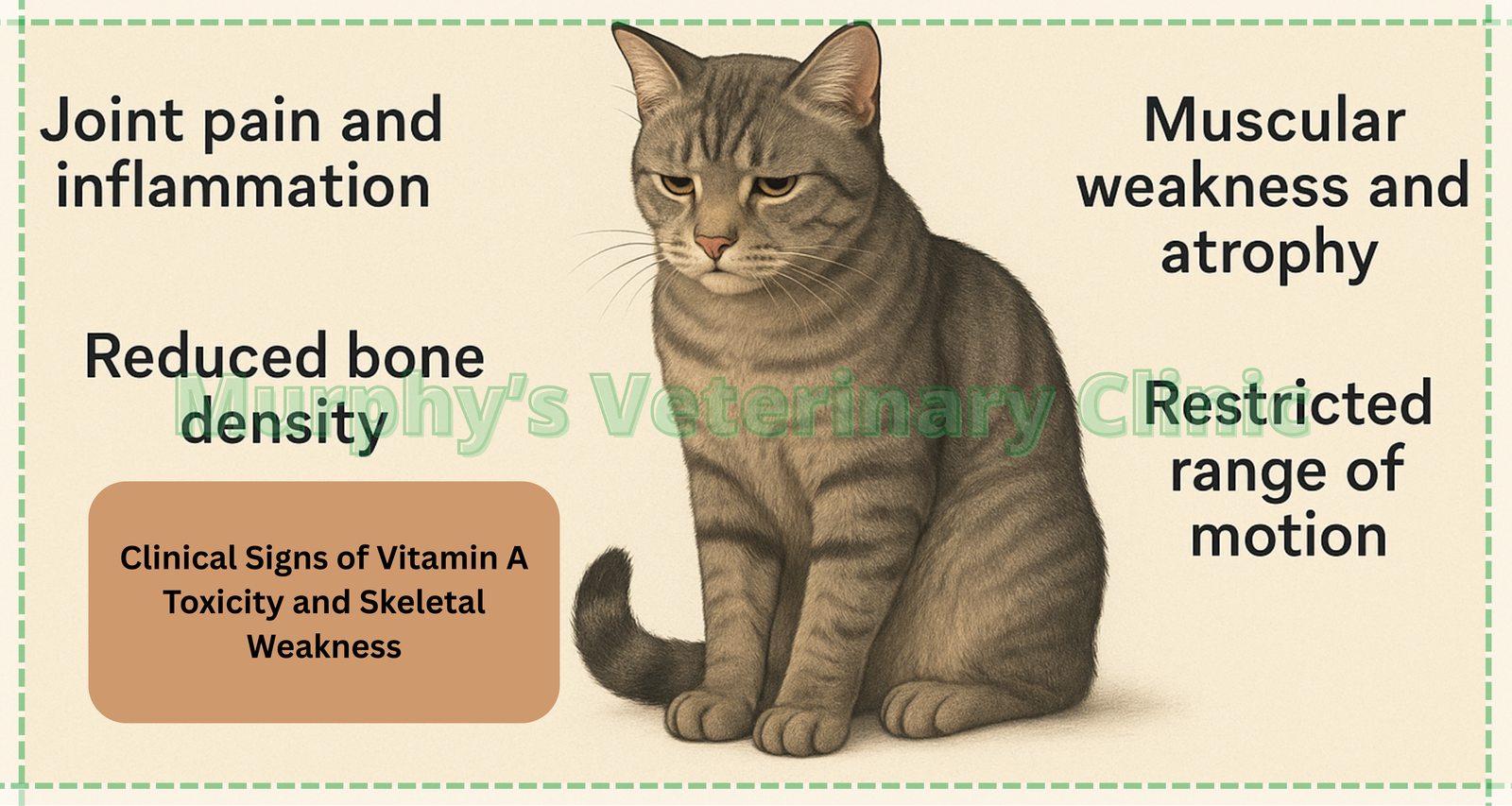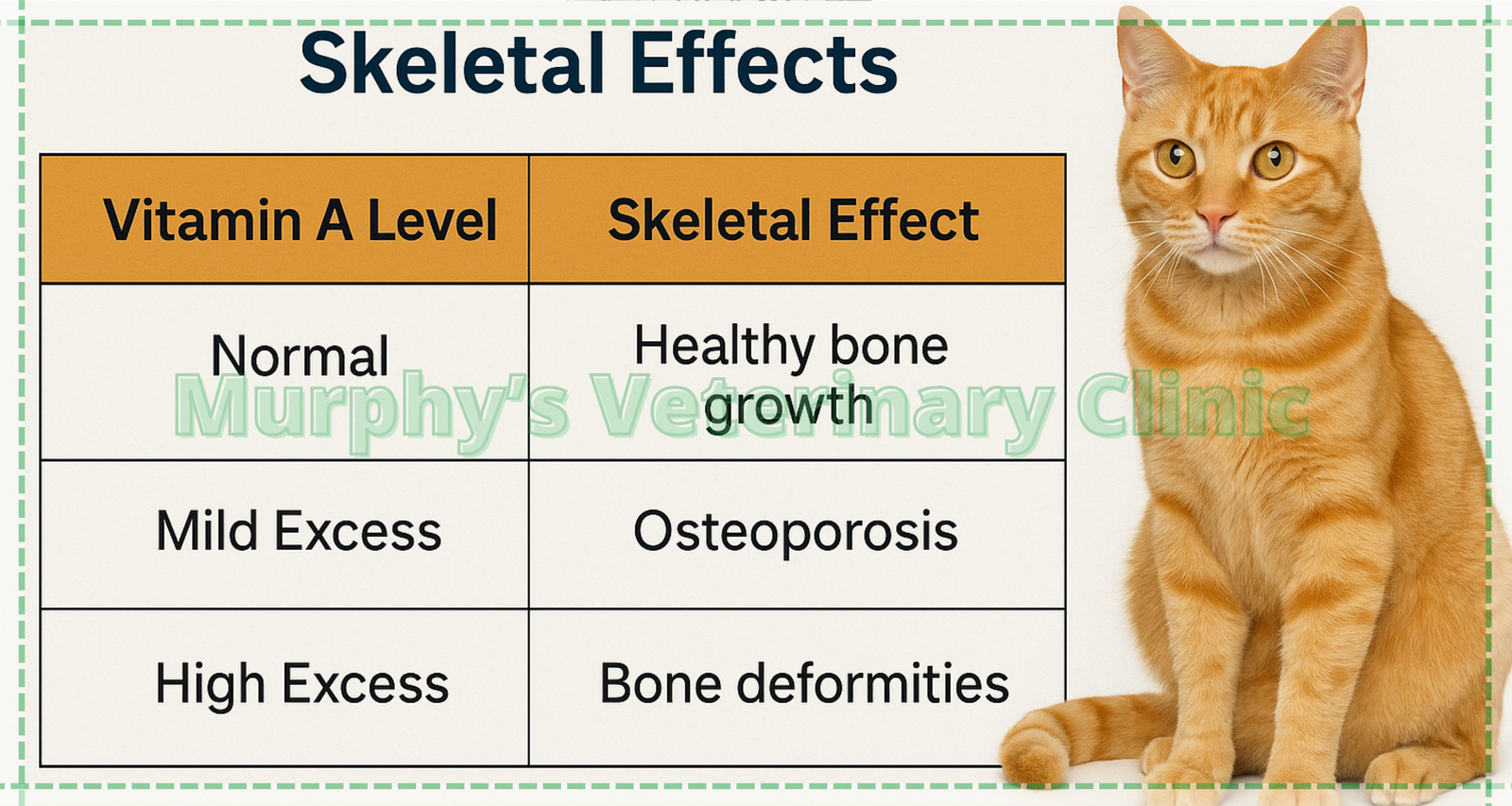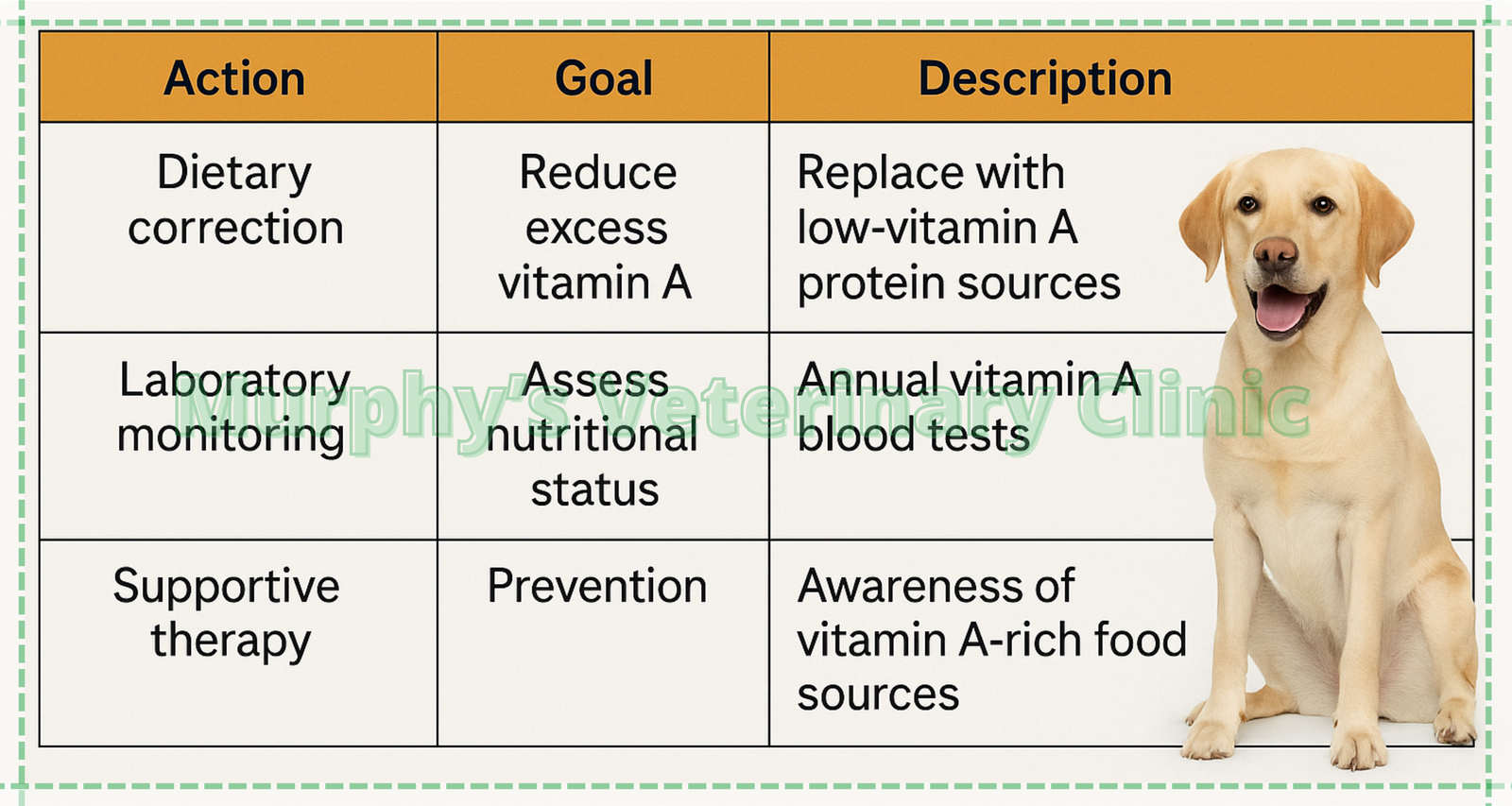Diseases & Treatments, Health & General Care, Nutrition & Diet
Vitamin A Toxicity and Its Impact on Skeletal Weakness in Pets
Topics covered in this article:
- Causes of Vitamin A Toxicity in Pets
- Clinical Signs of Vitamin A Toxicity and Skeletal Weakness
- Diagnostic Methods for Vitamin A Toxicity
- Vitamin A Levels and Skeletal Effects
- Treatment and Prevention Strategies for Vitamin A Toxicity
- Conclusion
Vitamin A Toxicity and Its Impact on Skeletal Weakness in Pets is a significant metabolic and nutritional disorder in companion animals, with potential to cause severe effects on the skeletal system and overall health. Excessive intake of vitamin A, particularly through unbalanced diets or inappropriate supplementation, can lead to pathological changes in bones and joints. This condition may result in osteoporosis, reduced bone mineral density, and muscular weakness. In pets, Vitamin A Toxicity develops gradually and may manifest as mobility issues and pain. Early diagnosis and proper management are essential to prevent permanent disability. Veterinarians use biochemical testing and advanced imaging techniques to detect skeletal damage associated with Vitamin A Toxicity. Pet owners’ awareness of vitamin A sources and prevention of overconsumption is the cornerstone of disease prevention. This article examines the various aspects of Vitamin A Toxicity and its link to skeletal weakness in pets.

Causes of Vitamin A Toxicity in Pets
Excessive consumption of vitamin A from dietary sources or supplements can trigger metabolic disturbances and damage to bone tissue. This condition occurs when a pet receives consistently high amounts of vitamin A, especially from animal sources like liver. Over time, accumulation of vitamin A in the liver leads to pathological changes and impaired bone remodeling. Common causes include inappropriate supplement use, unbalanced diets, and feeding errors. Timely diagnosis and regulation of vitamin A intake can prevent severe skeletal complications.
- Overuse of vitamin supplements
- Feeding liver or vitamin A-rich animal products
- Unbalanced dietary formulation
- Nutritional errors by pet owners

Clinical Signs of Vitamin A Toxicity and Skeletal Weakness
Pets affected by Vitamin A Toxicity often present with joint pain, restricted mobility, muscular atrophy, and decreased bone density. These signs may develop progressively and, in advanced stages, cause severe locomotor impairment. Behavioral changes such as reduced activity and loss of appetite are also common. Affected pets may show pain responses when skeletal regions are palpated. Veterinarians often suspect the condition based on these symptoms and perform further diagnostic evaluations. Timely recognition by pet owners can lead to prompt veterinary care and improved outcomes.
- Joint pain and inflammation
- Reduced bone density
- Muscular weakness and atrophy
- Restricted range of motion

Diagnostic Methods for Vitamin A Toxicity
Accurate diagnosis of Vitamin A Toxicity requires combining clinical evaluation, dietary history, and specialized testing. Blood tests measuring serum vitamin A levels, diagnostic imaging such as radiography and CT scans to assess skeletal changes, and in some cases, bone biopsy for confirmation are used. Detailed dietary assessment plays an essential role in identifying the source of excess vitamin A. Early diagnosis increases the likelihood of full recovery and prevents progression of skeletal damage.
- Serum vitamin A blood tests
- Radiographic imaging
- Dietary history evaluation
- Bone tissue biopsy

Vitamin A Levels and Skeletal Effects
The table below illustrates the relationship between serum vitamin A levels and severity of skeletal effects in companion animals. These data help veterinarians assess the severity of Vitamin A Toxicity based on laboratory findings and clinical signs, allowing for tailored treatment planning.
| Serum Vitamin A (µg/dL) | Clinical Status | Skeletal Effects |
| < 50 | Deficiency | Gradual osteoporosis |
| 50–100 | Normal | No significant damage |
| 100–200 | High-normal | Mild reduction in bone density |
| > 200 | Toxicity | Severe skeletal deformities |

Treatment and Prevention Strategies for Vitamin A Toxicity
Management of Vitamin A Toxicity involves eliminating high-vitamin A dietary sources, correcting the diet, and using balanced supplements under veterinary supervision. In severe cases, supportive treatment such as anti-inflammatory medications, physiotherapy, and specialized care is required. Prevention relies on educating pet owners, monitoring high-risk animals, and conducting periodic vitamin A level testing.
Recommended Prevention and Treatment Plan
| Action | Goal | Description |
| Dietary correction | Reduce excess vitamin A | Replace with low-vitamin A protein sources |
| Laboratory monitoring | Assess nutritional status | Annual vitamin A blood tests |
| Owner education | Prevention | Awareness of vitamin A-rich food sources |
| Supportive therapy | Reduce skeletal damage | Physiotherapy and anti-inflammatory drugs |
Conclusion
Vitamin A Toxicity and Its Impact on Skeletal Weakness in Pets is a critical concern in preventive veterinary medicine. This condition can cause irreversible skeletal changes if left unmanaged. Early detection and strict regulation of dietary intake are crucial to preventing disease progression. Pet owners must be aware of vitamin A sources and the risks of over-supplementation. Regular veterinary check-ups and laboratory evaluations are essential preventive measures. Collaboration between veterinarians and pet owners plays a central role in managing this problem and ensuring better quality of life for pets. Maintaining dietary balance and avoiding unsupervised supplement use are key preventive principles. This article has explored the medical aspects of Vitamin A Toxicity, emphasizing the need for proactive care.
Murphy’s Veterinary Clinic, equipped with advanced diagnostic tools, experienced veterinary professionals, and tailored nutritional programs, can play a pivotal role in the detection, treatment, and prevention of Vitamin A Toxicity. The clinic offers precise blood testing, dietary assessment, nutritional counseling, and individualized treatment plans to safeguard the skeletal and overall health of pets.


